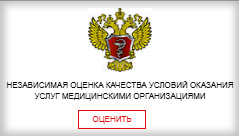Pulpitis is an inflammatory process in the neurovascular fiber (pulp) of a tooth. It is one of the comprehensive responses to different irritants gotten into the pulp. They are often microorganisms, and more rarely – chemical matters or an injury. Pulpitis is also one of the most common dental diseases. Up to 30% of patients address the doctor with this problem. It is provoked by a caries complication. It should be noted that caries won’t pass on its own and will cause this complication sooner or later, all the more so because pulpitis is harder to treat.
Pulpitis symptoms
Pulpitis symptoms correspond to its types. There are two main ones: acute and chronic. There’s a more detailed classification but it makes sense to describe the symptoms only for these main types.
Acute pulpitis symptoms: a very violent and intolerable episode of pain, ache arises spontaneously manifesting in an attack-like way, has a tearing and throbbing nature, aggravates at evening and especially night. As a rule, the pain extends into a temple, an ear or an eye pit. There are painless, so-called lucid intervals between the episodes of pain. As pulpitis progresses, the number of these intervals reduces as their duration. The hot food makes the pain increase, cold food doesn’t have the same effect, however, an episode of pain may even pass off being exposed to cold.
Chronic pulpitis symptoms are different. Chronic pulpitis results from the acute type of pulpitis when a patient got through pain and didn’t address a doctor, as well as after caries maltreatment. The main difference from the acute type is less pronounced symptoms. It could be said that the disease is latent. In some cases, the patient complains of slight discomfort or moderate pain when eating hot or cold food. The above-mentioned symptoms are typical of chronic fibrous pulpitis, but there are also hypertrophic and gangrenous subtypes. In hypertrophic pulpitis, a polyp grows from the tooth cavity, touching it induces pain and bleeding. In gangrenous pulpitis, the pulp can be covered with a yellowish gray deposit, there’s decomposed odor or strong breath, the tooth is heavily destroyed, the disease state is long-term. Chronic pulpitis complication has the same symptoms as the acute type. In any type of this disease, there are no general state deterioration and elevated temperature.
Pulpitis causes
Pulpitis causes can be divided into three groups:
- bacterial (the most common cause);
- treatment-induced;
- traumatic;
- autopathic;
- chemicall
Pulpitis is of bacterial etiology in the majority of clinical cases. Microorganisms enter the tooth cavity as a result of non-treatment and further caries progression, and pulp inflammation is a response to bacteria and their toxins. Treatment-induced causes involve doctors’ mistakes in treating caries and, more rarely, other diseases. The other causes of the pulp inflammation are injuries: dental fracture or luxation.
Pulpitis treatment
Pulpitis can be treated by the following methods:
Biological method. Unfortunately, this method cannot be always used but only in the acute type and only at the early stages of inflammation. That is too bad, because the distinctive feature of this method is that a tooth remains live, the nerve is not removed from it. Inflammation in the pulp is being liquidated using special preparations. Then the tooth is filled in a regular manner. Physiotherapeutic methods of treatment are prescribed.
Where it’s impossible to use the biological method, the tooth pulp – its top – can be partially removed. The tooth keeps to be nourished, it is partially viable. This method is often used in children whose tooth roots are still forming.
Nevertheless, pulpitis treatment, as a rule, involves complete removal of the nerve and the whole pulp. There are two options – one is to immediately remove the anesthetized nerve during the first visit and another is to put ‘arsenic’ mortifying the pulp and remove it during the second visit. The doctor decides what is better. After pulp removal, the teeth canal needs to be expanded to fill them.
The doctor also chooses filling material. Gutta-percha points, which do not diffuse, are currently popular. Following canal filling, the patient makes an X-ray image to make sure the canal filling quality is high. According to the rules, canals should be filled up to the apex (top).
Putting a tooth filling is usually the last stage. In conclusion, we’d like to say that pulpitis is quite a cunning disease and one has to cure it, because nobody wants to have complications.


